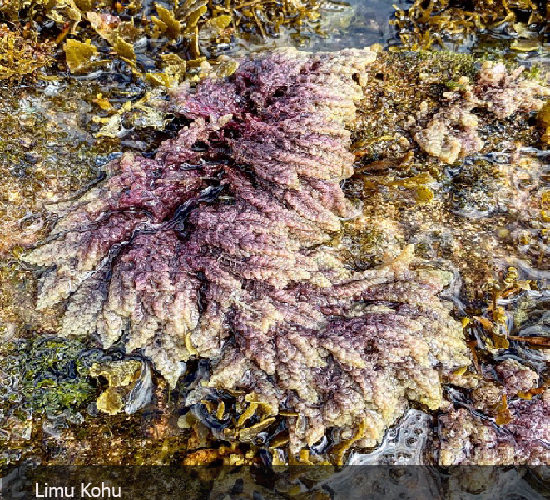By: MPW Staff
This Spring has been an especially abundant time for the Pupukea Marine Life Conservation District. A combination of weather changes and a dramatic decrease in human use has resulted in the perfect storm of opportunity for growth and renewal. The building block to any marine ecosystem is algae. Micro-algae like zooxanthellae (the algae that lives in coral and gives it energy to grow and reproduce) and macro-algae (limu or seaweed, that provides food for marine life and us as well) are critical to
any healthy marine ecosystem.
“One of the most beautiful kilo (observations) we’ve made over the past couple months is a boom of algae growth in the tide pools. Thousands of feet usually scrub the algae off so it never has a chance to grow, but now every submerged area is covered in a fine carpet of limu,” says Jenny Yagodich, MPW’s Director of educational programs.
The recent break from humans and a naturally occurring growth season have resulted in an abundance of limu in areas researchers have not seen before. “We’ve been surveying and keeping track of the limu that grows here for many years. Most of the limu grows out on the reef flats…we never really see much in the tide pools. During our last kilo session, however, we documented 10 native limu varieties all within the tide pools” Yagodich said.
Herbivorous fish such as Manini (convict tang), Uhu (parrotfish), Kala (bluespine unicornfish), and Umauma Lei (orangespine unicornfish) help to keep the reef habitat healthy. In the tide pools, an increase in turf algae has led to an increase in juveniles of these species. “The whole point of a Marine Life Conservation District is spillover – the hope is that fish and other marine life will have a healthy, abundant area in which to grow and reproduce, then they will spill over into outlying areas. If their food source, limu, is not here, they won’t be able to be here either,” adds Yagodich.
Following pono practices such as not stepping on the reef or submerged rocks, not using sunscreens that contain damaging chemicals such as oxybenzone, avobenzone, and octinoxate, and not touching or altering the behavior of marine life all help to ensure that the progress the marine ecosystem has made recently will continue.
As a reminder, the Pupukea Marine Life Conservation District is a no-take area, but in other areas where take is allowed, here are some great things to know:
• Limu doesn’t have roots like land plants and trees. Instead, they have a “holdfast” used to anchor themselves onto the reef and rocks. When collecting limu, never pull the holdfast off, rather, pinch or cut the limu leaving an inch or two attached to the reef…it will grow back!
• Limu is good for you! It’s full of vitamins like vitamin C, minerals like iron, and fiber.
• Limu is responsible for over 75% of the world’s oxygen! Phytoplankton, a type of marine algae, carry out photosynthesis using carbon dioxide and
water to generate food for themselves, while giving out oxygen as a waste product.
• Not only does seaweed help the natural cycle of the oceans but they also provide shelter and breeding grounds for the marine life that live with
them. When you collect limu, be sure to remove all the critters so they can continue to grow.
• Limu is traditionally used in ceremony here in Hawai‘i. Limu Kala (Sargassum spp.), for example, is used in conflict resolution ceremonies called Ho‘oponopono (kala means “to forgive”).
For more information, visit www.pupukeawaimea.org or check us out on IG @malama_pupukea_waimea.



